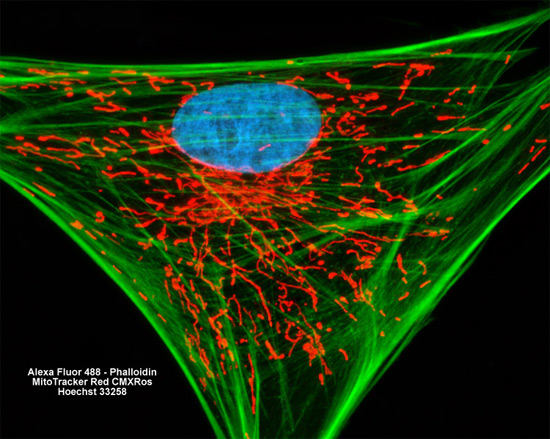The Indian muntjac possesses the fewest number of diploid chromosomes of all mammals, with only six chromosomes in the female and seven in the male. Due to this fact, cell lines derived from the tissues of the animal are extremely popular for mitosis research.
Indian Muntjac Deer Skin Fibroblast Cells

The adherent monolayer deer skin cell culture presented in the digital image above was labeled for the cytoskeletal filamentous actin and intracellular mitochondrial networks with Alexa Fluor 488 conjugated to phalloidin and MitoTracker Red CMXRos, respectively. Nuclei present in the cells were counterstained with a DNA-selective bisbenzimide dye, Hoechst 33258. Images were recorded in grayscale with a Hamamatsu ORCA AG camera system coupled to a ZEISS Axio Imager microscope equipped with bandpass emission fluorescence filter optical blocks provided by Chroma and Semrock. During the processing stage, individual image channels were pseudocolored with RGB values corresponding to each of the fluorophore emission spectral profiles.



